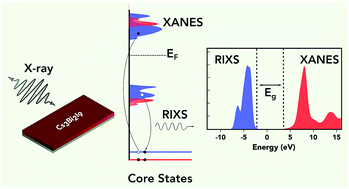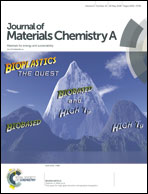The electronic structure and band interface of cesium bismuth iodide on a titania heterostructure using hard X-ray spectroscopy†
Abstract
Bismuth halide compounds as a non-toxic alternative are increasingly investigated because of their potential in optoelectronic devices and their rich structural chemistry. Hard X-ray spectroscopy was applied to the ternary bismuth halide Cs3Bi2I9 and its related precursors BiI3 and CsI to understand its electronic structure at an atomic level. We specifically investigated the core levels and valence band using X-ray photoemission spectroscopy (PES), high-resolution X-ray absorption (HERFD-XAS), and resonant inelastic X-ray scattering (RIXS) to get insight into the chemistry and the band edge properties of the two bismuth compounds. Using these element specific X-ray techniques, our experimental electronic structures show that the primary differences between the two bismuth samples are the position of the iodine states in the valence and conduction bands and the degree of hybridization with bismuth lone pair (6s2) states. The crystal structure of the two layered quasi-perovskite compounds plays a minor role in modifying the overall electronic structure, with variations in bismuth lone pair states and iodine band edge states. Density Functional Theory (DFT) calculations are used to compare with experimental data. The results demonstrate the effectiveness of hard X-ray spectroscopies to identify element specific bulk electronic structures and their use in optoelectronic devices.



 Please wait while we load your content...
Please wait while we load your content...